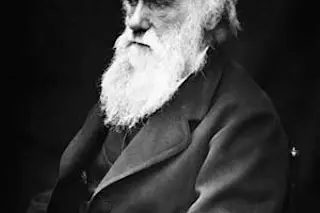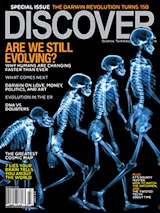▪ They Don't Make Homo Sapiens Like They Used To: Humans have recently evolved extremely fast to adjust to new pressures
▪ We All Live in Darwin's World: The concept of evolution is now used to explain not only the origin of species but also love, politics, and even the cosmos
▪ DNA Agrees With All the Other Science—Darwin Was Right: Molecular biologist Sean Carroll shows how evolution happens, one snippet of DNA at a time
▪ Darwin's Dystopias (slideshow): Nightmarish artworks inspired by the brutal fact of survival of the fittest
▪ Six Sites That Are the Galapagos For Modern Darwins: Current hotspots of evolution research, from Pacific Ocean trenches to hospital emergency rooms
▪ Evolution by Intelligent Design: Gene-tinkering bioengineers may well control the long-term future of humanity
For anyone interested in evolution—which is to say, for anyone interested in the scientific understanding of the world—2009 marks two ...















